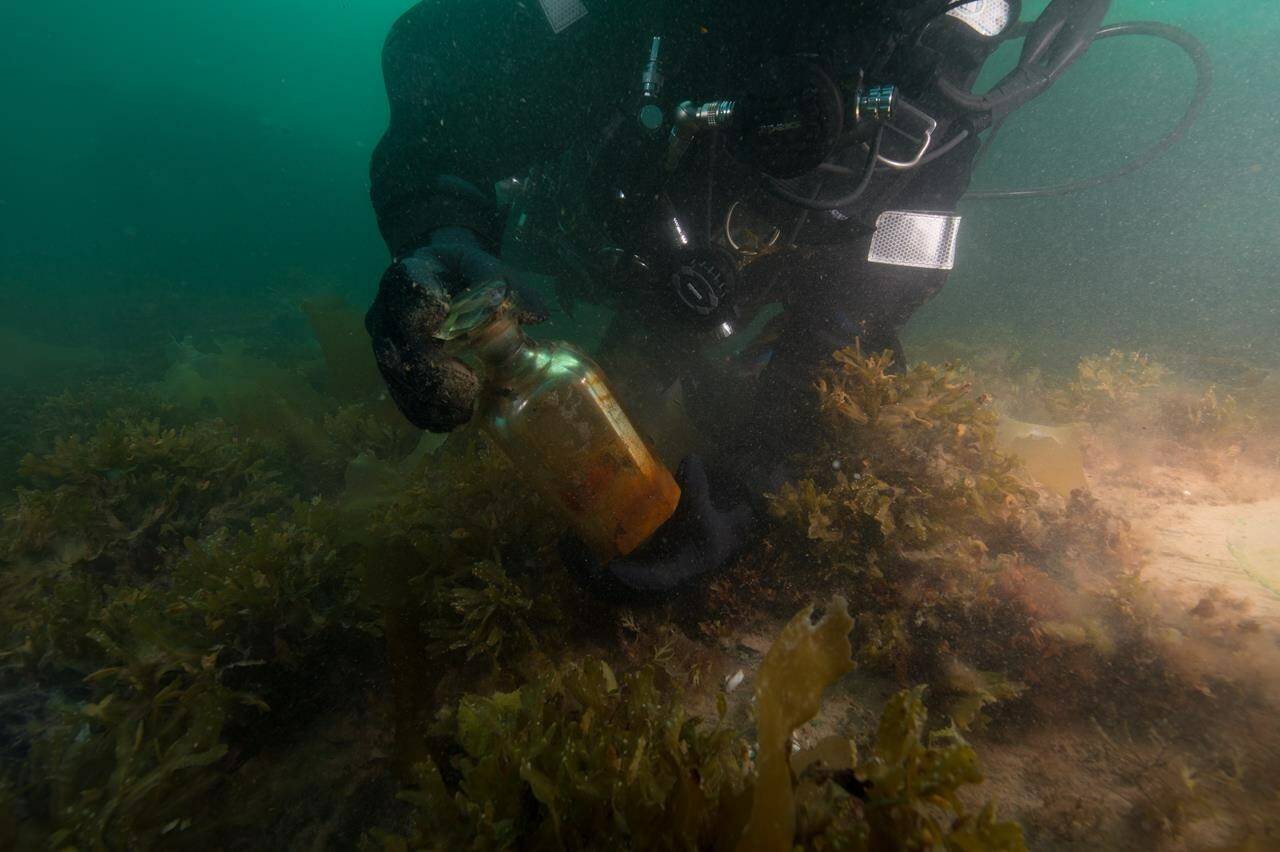If it’s possible to look through the eyes of the past, Jonathan Moore has done it.
The manager of a team of Parks Canada underwater archeologists excavating the rediscovered ships of the doomed Franklin expedition once held in his hands the lens from a pair of eyeglasses fetched from the deep. Then he held it up to his own eye.
“I wear glasses,” Moore said. “I know that would have been an incredibly important personal possession.
“It certainly struck me as a connection with that individual. Some of these specific artifacts are incredibly evocative.”
Moore was summing up what he called a highly productive season of excavation on the Erebus, one of Sir John Franklin’s two ships that set out from England in 1845. Neither it nor the Terror — nor the 129 men they carried — ever returned.
More than 30 expeditions sought them, to find only a few artifacts, graves and ghastly tales of cannibalism.
Through Inuit oral history and high-tech surveys, Erebus was found in 2014, just off the northwest coast of King William Island in Nunavut. The Terror was found two years later. The discoveries made global headlines.
Since then, Parks Canada’s underwater archeology team has been excavating both ships. Last summer was a good season.
“We had excellent weather, excellent underwater visibility,” said Moore.
That allowed the team to make 68 dives. Heated diving suits with air pumped from the surfaced allowed some of those dives to last for hours.
Climate change, however, is shifting the terms of the work. Less sea ice means the wrecks are more vulnerable to waves and currents generated by winter storms, Moore said.
“There’s noticeable change to the wreck.
“In 2018, part of the upper deck flipped over. We’re getting evidence of artifacts moving around and timbers shifting.”
To track the changes, the team documented the site with thousands of high-resolution digital photos and produced precise three-dimensional models. It’s working with Edmonton-based engineering firm Stantec to model the currents and other disturbances influencing the site.
The Erebus, in much shallower water than the Terror, is most at risk. That’s why last summer’s dives focused on it. The disturbance had revealed a tantalizing new target.
“We were able to get access to a seaman’s chest,” Moore said. “We’ve had our eye on it for years.”
The team has now been into the cabins of two officers, the ship’s steward and, with the new discovery, the storage trunk of an ordinary sailor.
“It kind of gives us a cross-section of the crew, from lower ranks to upper ranks,” Moore said.
Artifacts keep coming to the surface. Divers found map-making tools, coins, a pistol and medicine bottles. Some items are clearly personal — a leather shoe, shoulder epaulets, a fishing rod with a brass reel that looks ready for use, a group of fossils someone saved for souvenirs.
The team is now working with the Geological Survey of Canada to find out where the fossils came from and perhaps learn more about where the ships travelled before sinking below the ice.
Both the Terror and the Erebus sites are co-managed by Parks Canada and the Nattilik Heritage Society in Gjoa Haven, Nunavut, which also administers the Wrecks Guardian Program and the Nattilik Heritage Centre. Recovered artifacts are co-owned by Parks Canada and the Inuit Heritage Trust.
Much has been done since the first of the wrecks was discovered, with dozens of artifacts undergoing the painstaking process of conservation in Ottawa labs. Years of excavation remain, but Moore never loses sight of the fact that the story unfolding in front of his diver’s mask is one of the great tragedies and mysteries of the North.
“You can imagine someone walking along a beach and picking up those fossils,” Moore said. “(The artifacts) give us this keen insightful connection to people in the past.”
READ ALSO: Explorer’s cameras recovered after 85 years on Yukon glacier
Bob Weber, The Canadian Press

